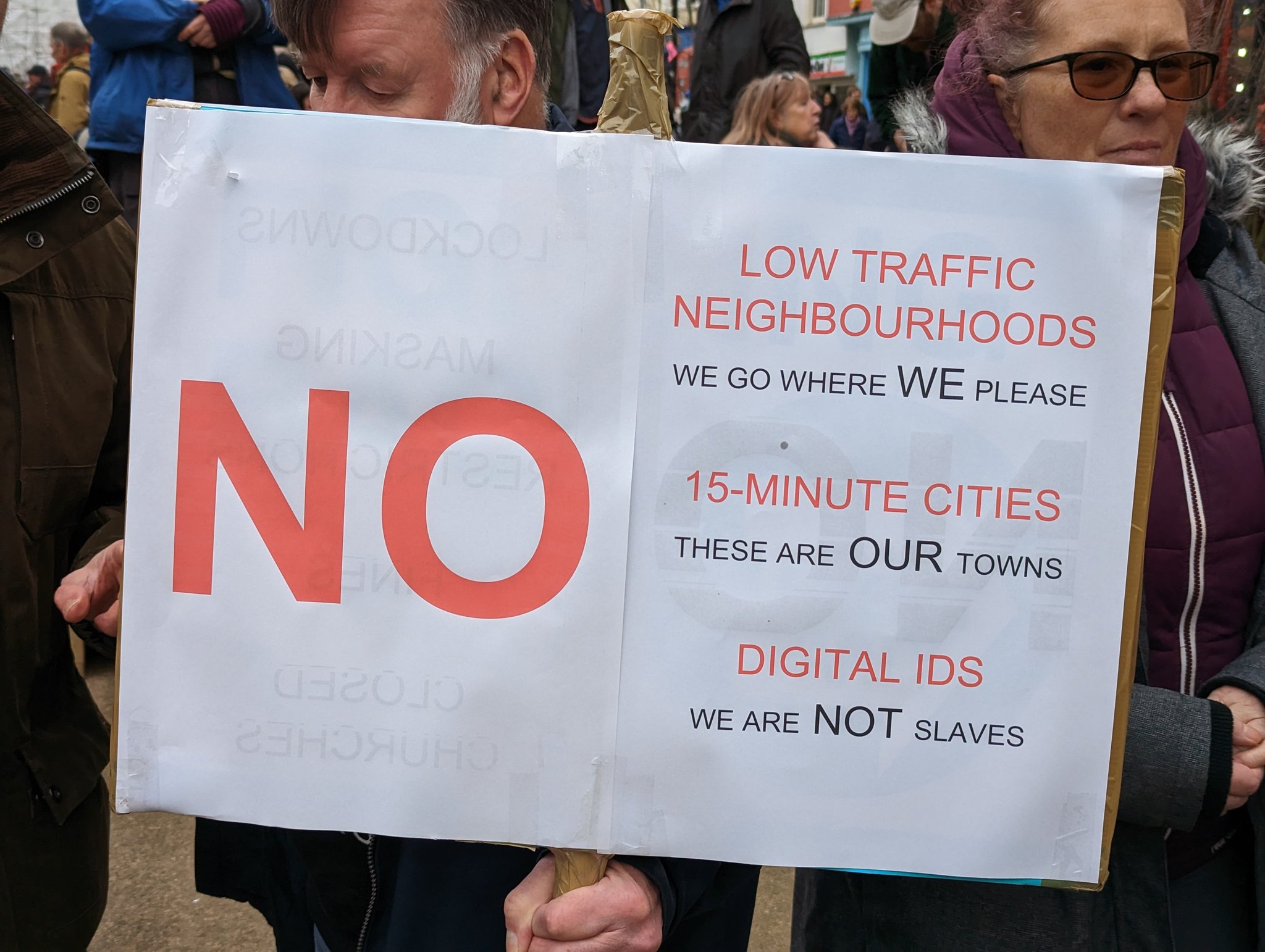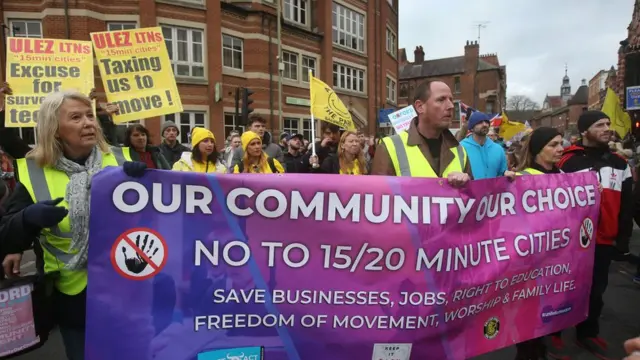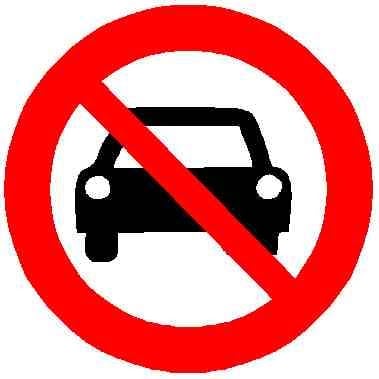- cross-posted to:
- [email protected]
- [email protected]
- cross-posted to:
- [email protected]
- [email protected]
When you look at old cars, they were simple. Small, just enough power to get around. SUVs are monstrosities that shouldn’t exist.
Old car:

I love the look of older vehicles. I even want a few. I just don’t want to have to drive them anywhere. I’ll be content with a few bikes and a nearby train station.
I mean it’s pretty long and probably not great on gas mileage, but hey, it’s dead simple.
See, that’s art.
Wildly unsafe for those inside, but art doesn’t have to be practical.
More importantly: wildly unsafe for those outside
Hey found the guy that can point out the exceptions. How hard can I roll my eyes.
To be fair you could have pointed to a specific era such as the late '70s and '80s post fuel shortage. '50s and '60s cars are notoriously inefficient solid steel death landships.
Yes I could add approximately 5653 caveats to everything I say. Let’s begin.
*
That’s some quick counting!
How about a whole parking lot? Do these look especially small to you?



Do you even live in the US and have you SEEN how fucking HUGE vehicles driven by the average person are now??? There aren’t even CARS around hardly anymore. They’re massive trucks, suvs, or crossovers. Ford doesnt sell cars in the US anymore because of this (except the mustang). You can barely buy a wagon in the US now. Vehicles are FAR bigger and heavier than they were in the early days. Your photo depicts mostly tri five chevys which are not even large cars. Now yes caddy’s have always been huge but that’s their brand.
Have you seen how big cars actually were in the past? Like look at the actual numbers of what people actually drove.
Here’s a list of most popular cars by year in the US from 1950 onward: https://www.rd.com/list/the-most-popular-car-the-year-you-were-born/
You can pick out times where there actually was a small car that was most popular. 1956 Chevy Corvette. 1961 Jag E-type. 1972 VW Beetle. It never lasts, though (and that’s even ignoring the fact that the first two there are sports cars that are specifically made small for performance reasons). To follow up what happened with each of those a year later, 1957 brings the Ford Skyline, which is gigantic. 1962 has the Lincoln Continental, which isn’t ridiculously large, but not especially small, either. 1973 is the Chevrolet Monte Carlo which is also more performance oriented, but not that small, either. 1974 brings the Impala, which is rather large for a two-door, and then 1975 is the Cadillac Sedan de Ville, which is the dictionary definition of land yacht. That was right in the middle of an oil crisis where we might expect a move towards smaller cars.
Yes, SUVs are taller and the truck market is absolutely ridiculous, and that does have an affect on pedestrian safety in itself. Popular cars aren’t particularly heavier than popular cars from decades ago, though, and they often have a smaller footprint on the road.
Yes 😭
Ok let’s begin! 🙄🙄🙄
Do you have any evidence your claim is true?
What is that question even? Do you have evidence to the contrary?
That’s not how claims work.
🙄
You could just say “no, I don’t have evidence”.
It isn’t an exception. The car pictured is still much smaller than modern US cars (I think the pictured one is a US one but not 100% sure)
It’s not smaller than modern cars. That’s a 1960 Licoln Contiental with a curb weight of 5,000–5,700 lbs (depending on the exact specs) and 227 inches long. For reference, a 2021 Cadillac Escalade has a curb weight of 5,635–5,823 lbs and a length of 211 inches.
Let me rephrase to be more precise. Cars of that size are not common anymore in the US, judging from then vs now parking lot photos. I know small cars are still being made; they’re making smaller cars than ever before these days, but that’s not an argument against there being a trend of cars becoming bigger on average over time.
My argument is that it ebbs and flows, but it’s been mostly big all the time. Sometimes, ridiculously big. They might be sedans that are shorter than a modern SUV, but most of that height is empty space. The curb weight is as bad as it ever was, and the road footprint might have been worse in the past.
That’s rich coming from you.
Don’t follow, can you explain? Are you stalking me? This is the second strange message I got from you today.
I got your back, bro. I went through his history and pasted that same response to one of his random comments.
How did this happen?
Convenience and Capitalism, what a wild duet!
And it’s not even convenient…unless you purposefully destroy existing infrastructure and aggressively promote individualism in your society such that nobody has any other real choice! Walking distance? Never heard of her.
Yeah whats actually convenient is being able to step out your home, jump into the tram, read the newspaper for 15 minutes, jump out and have teleported to work.
And also I can walk 5min to grocery store or 10min to a haircut, I can have a drink and don’t need to spend Uber money to get home, all travel time is the same because there’s no such thing as rush hour on a metro or with a bicycle(actually with the metro it’s faster because it comes more frequently at those times), etc… It’s all winning, basically.
I mean, the answer is in the line right above the question.
Trains are much more convenient.
This one is fully on capitalism.
Trains are convenient until you want to go somewhere without rails :( which I guess could be solved with more rails…
Cars are convenient until you want to go some place without free parking directly in front of the entrance. (Or so I gather from the whining and complaining that drivers so often do.)
It’s ALWAYS capitalism, people STILL don’t get this (I can’t blame them they got propagandized into believing capitalism is the holy economy or some stupid shit)
“Just a little more neoliberalism, bro, I swear we’ll usher in an era of prosperity if we just do it harder”
Well now it’s fascism
Fascism is capitalism in decline.
Just one more lane bro
Classic: https://www.youtube.com/shorts/0dKrUE_O0VE
The Katy cost a mere $7 billion and it’s still often a glorified parking lot. It’s got less throughput than a single train for moving people, but I’m sure adding another lane will fix it. https://www.youtube.com/shorts/o-F-7Yc-A8U
Love this reply
Only in US
Pretty sure car centric design is everywhere.
not to the same degree everywhere, most European cities do have plenty of infrastructure for cars, but also plenty for public transport; I live in a city where it’s possible to get everywhere without a car, which is why I don’t own one
Canada too. Europe was adopting it, but their Continent is already too population dense for the ponzi scheme of car centric design to really take off.
“Cars” were the “superior” invention to rail, so wide spread adoption was attempted in most places.
TIL Australia doesn’t exist.
Is that the vast wasteland off the coast of NZ?

What of it?
America has LUNGS and ARTERIES whereas
Europe has mere wimpy BRONCHIOLES and CAPILLARIESThose arteries are pretty congested, cars are ld cholesterol, trains are hd cholesterol, and we are eating a diet of trans fat up in here.
America, fuck yeah
Nothing a triple bypass and a meat king supreme can’t fix
It’s the bike lanes! 😡 /s
STAY IN THE BIKE LANE !!
How is that picture 1200x0, but I can see it?
Edit:oh wait they just named it that. I’m not always smart.
Our entire continent has been given almost wholey over to the automobile, and despite it being a wasteful, ultra expensive, and inefficient way of transporting people and goods, because of entrenched interests we cannot well improve on it with even interstate freight and passenger rail being opposed by oil companies and car companies and probably Road repair companies and everyone else.
A real popular government would rally the population to overcome those entrenched interests and make a viable Interstate freight and passenger rail, it will not get any easier in time and it has to be done.
It would be a proper use of borrowed money as it would pay for itself many times over and lower the cost of living and doing business and make the us more competitive.
Without needing automobiles we could have higher standards of living with vastly lower expenditures.
This biggest argument i see is people somehow think things like transit will remove their freedom of mobility, when in reality it vastly improves mobility, especially for those who can’t or don’t want to drive.
“Cars are freedom!” … so long as you register it with the government, insure it with a private insurance company, carry a photo ID from the government. Where a train you just pay and get on, or a bike you just ride.
Relying on the automobile has made us exceptionally vulnerable. At any time our only means of achieving an income can be removed. We spend magnitudes more money than we could otherwise and everything from building infrastructure to support so many cars everywhere, to the cost of cars and repairs, too the ability of others to take that away from us at a moment’s notice.
With designed cities we could have housing on a direct line to our business sectors on a public transit, which would free up a substantial portion of our income, while if the housing was constructed intelligently and fairly we would free up the better part of half of our costs to live.
Also remote work could Free People from the commuting nightmare in White Collar work.
My grandmother was trapped inside her house for years at the end of her life. All she could do was wait for people to visit her because she couldn’t drive.
When I lived in a small city in Japan, if I went out during the day, there were ancient people all over the place who had taken the bus into town.
Anybody who would say that the American way of throwing elderly people to the wolves is better… Well, anyone who says that is just an inhuman monster, aren’t they?
It blows Americans minds when they hear about how people go skiing in Switzerland, taking public transit from their front door to the foot of the ski hills.
Buts it not possible to play any sports without the dodge ram 3500 extra cab mega box extra large big horn edition.
The dodge ram commercial shows some guy driving offroad, smashing through snow, then climbing out and going skiing.
Some sucker buys the truck and spends 3 hours stuck in traffic slowly driving to the ski hill with his skis in the back.
I used to just think of this as yeah sure things are just bigger in America, it’s a huge place with lots of people… but then I realized that the cities with ridiculous numbers of lanes like this aren’t any bigger than cities in the rest of the world. Houston (pictured) isn’t even in the Top 200 biggest world cities.
Yep, just look at Tokyo.
people argue that japan has an easier time doing public transport because it’s a slim island that’s roughly linear from north to south, so it’s easy to serve it by one public transport line.
But the same is true for the US, where most people live either on the east coast or on the west coast. You basically have two slim, linear areas that can be served by 1 line of public transport each.
Another problem is that the US has stupidly strong private property rights. Everyone whose land is going to need to be confiscated to build the railroad tracks will try to bilk the high-speed rail authority out of every dollar they can, and because the US has a very strong civil court system which strict procedural law, it only costs a landowner a few thousand dollars to cause millions of dollars worth of legal headaches for the rail authority
isn’t that also true for highways?
The difference is that most highways were built in the past before such things like environmental studies were required and before many of the attack vectors used by property owners and other obstructionist parties to block construction were discovered or created. The US no longer builds major roadways, and merely widens existing ones, which in many cases do not require more land to be requisitioned.
interesting. here’s a short reminder that railway tracks existed before highways (even before combustion engines in general). it’s sad that they were neglected so much. maybe they can be built directly adjacent to existing highways? at least along the coastlines …
This idea has been adopted to some degree. The Brightline West high-speed rail project (in construction since 2024, planned to open 2028) connecting Las Vegas with Los Angeles uses existing land along the existing I-15 expressway, which is extremely congested.
I believe it was during the presidency of Ronald Reagan that private rail operators were relieved of service requirements for passenger trains, as long as the companies maintained the tracks and gave priority to passenger trains operated by Amtrak, the American state rail operator.
The companies have completely neglected the tracks and many are in poor condition from heavy use by freight trains, and as a result, maximum speeds have been drastically lowered to maintain a level of safety. Many ordinary trains in the US run at around 80-90 km/h, which is miserably slow.
In addition, Amtrak trains are supposed to be able to overtake slower freight trains by using splits in the track (where a section of track splits into two temporarily, the slower train taking one side and the faster train taking the other to pass it). However, as freight rail operators have realised, the number of engineers and conductors needed to run the trains is directly proportional to the number of locomotives, and thus they prefer running fewer, longer, trains than many shorter ones. As a result, freight trains are unbelievably long, some are a good few kilometres in length, which is longer than the entire sections of split track, making such sections worthless as it is impossible to use them to bypass the slower trains.
Where Amtrak has complete control of the tracks, such as in the northeast, service is comparable to European rail providers. For example the Acela service, which runs between Washington (DC) and Boston with stops at Baltimore, New York City, and Philadelphia. There are 20 trains per day and it reaches a top speed of around 250 km/h. The total journey takes 6.75 hours and travels 735 km (12 stops) meaning the average speed is a comfortable 109 km/h.
It’s even worse in Canada where 50% of the population literally lives in a straight line in Ontario/Quebec
And we’ve been “studying” high speed rail in that corridor for roughly 40 years now. One of these days we’ll build it, I swear!
I have never been on a road like the one in the picture.
I’d have a nervous breakdown.
It’s sprawl. Building up costs too much via some combination of building taxes, NIMBYs, and construction overhead, so people build out instead. Building out means more and more miles of infrastructure (Roads, water, electric, natural gas, signs, gas stations, etc., etc.) per capita.
Then when the people in the sprawled-out suburbs want to visit the city centers anyway, because that’s where jobs and shopping inevitably are (People live where people live), they have to build massive roads to get in and out.
I’ve looked it up and the Katy Freeway on the picture has an average of 219 000 using it per day. Let’s be very generous and assume an average of 1.5 person in each car, so around 329 000 people are moved each day thanks to this highway.
A single metro line or two tramway line moves more people per day than that.
Its crazy. At its widest it has 26 lanes. It amazes me that they just kept widening it, instead of thinking “We’ve added 5 lanes, we should probably find an alternative solution”.
In the city where that exists, they really isn’t much else that’s viable. Decades of bad urban planning mean that comprehensive public transportation is not cost-effective in that area. And “not cost-effective” doesn’t just mean “expensive”, it means “would cost an order of magnitude more than the city budget”. So the only real solution for them in the short term is to build the world’s most ridiculous laughingstock of a road.
Key phrase being “short term” - nobody seems to build with a 20+ year plan to improve the city in America, whereas in European cities every time I visit one I haven’t been to in a decade, I usually notice I’m reaping the benefits of major infrastructure improvements which take decades to plan and build. Short term, selfish (what will get me elected again, or what will pay me the biggest bonus) thinking, and corruption, is what keeps American cities shitty
There are 29 countries in America that aren’t like this. It’s really just the USA.
The built-up parts of Canada are about as bad.
I know. It was a passive-agressive way of telling them not to arrogantly abuse the name of the continent for their country.
Everybody wants a back yard, nobody wants buses or trains
I have both (not so much on the train front unfortunately).
I wouldn’t mind living in an apartment building, so long as it’s equally co-owned by the people who live in it, and by nobody who doesn’t. And that it has a green space on the property for recreation and a community garden.
I don’t want a backyard, I want a park within walking distance.
I don’t want an expensive hunk of steel and plastic, I want a train that picks up every ten minutes.
I know a large number of people who feel the same way. But none of them have billions of dollars to lobby my mayor or governor or President. Hell, even when we do get a bit of outright bribery to bend things our way, a single petty asshole can foul the whole project.
Busses work perfectly well for suburban neighbourhoods with back yards. With 1000m² each, you can place more than 250 lots around a bus stop, so that no one will have to walk more than 500m. With average families of four, that’s a thousand potential passengers. Not enough for a metro station, but more than enough for a bus service every 10-20 minutes to get to the next train station.
What also works well: Build a few 3 story apartment buildings, a supermarket, a few small stores, a school, a kindergarten and a pub around a train station. Build the single family homes around that infrastructure and you have the perfect place for almost everyone. Families can live in the outer area, when the kids get older they can move out into the apartments and still be around. When they start their own family they move back into the garden homes and the grandparents who get too old to work their gardens can move to the apartments. And all that within 15 minutes walking distance of a train station.
My neighborhood used to have three bus lines. I think it’s down to one, and we recently put in the laziest bike lanes. (Painting a bicycle in the hard shoulder is not sufficient!)
…no one will have to walk more than 500m.
Well I would walk 500m.
And I would walk 500 more.
And all that within 15 minutes walking distance of a train station.



🤦♂️
I don’t want a back yard. What I want is the noise isolation and the feeling of safety and personal space. I also like having the ability to use that space for personal projects if I want to.
I have seen condos and other urban spaces that are well-built enough to provide the same benefits that I see from a back yard. But they’re very expensive.
My basic point is that people sometimes forget what they really want, and instead focus on something that has given them those benefits.
I’m happy to never see wherever the fuck that is.
Houston
Hey at least you also wind up doing your job mostly over the Internet with people that aren’t anywhere near your office when you get there.
What I learned in Texas is that almost everything is a toll road too. So you have to pay to use the roads each time.
We all now how
Modern American society, mind you
American society is 99% in on it, but many other places are trying to go there too.
We’re mostly going the other way in Western Europe
Not particularly quickly in most places, mind, but we’re heading in the right direction on that at least

Even though the USA is clearly the worst, still almost all countries have about twice as many people driving as taking other forms of transit, and in many more, the majority. So the image applies to the majority of people in most countries.
Even the Netherlands. poster child of biking 😔
I mean, 40% of the population biking to work is nothing to sneeze at, compared to the US’s 6-or-so %
It’s huge, but it’s still fewer bicyclists than car users. But, at 40% it means that bicyclists have a stake in every decision being made, and people will listen to them. Car drivers will probably still win more than their fair share of contests, but at least they’re not unopposed.
almost all countries have about twice as many people driving
No country except the US, according to your own graphic. 67% or more of “Own car” is the criterion.
Unless, of course, by “driving” you also mean motorbikes, boats etc. and there’s a sizable portion of these in some countries. The graphic doesn’t show that.If you add up the India bars, you’re quite far away from 100 % still… Mass NEET is the answer I guess.
I wish the statistic include motorcycle/moped, then show the statistic from Asian country like Taiwan or Philippines or Malaysia, car and motorcycle have equal share on the road yet it still a fucking mess here(at least in Malaysia).
Very anecdotal so feel free to disregard, but I’ve traveled across the whole Europe and haven’t seen anything like that in the picture.
Maybe the closest thing was a toll gateway somewhere in France where road widened up to about 20 booths. But then it immediately narrowed back to three.
And for most of the countries that don’t have a lot of cars, it’s not because they’ve decided to invest in public transit and bike lanes, it’s that people are poor and can’t yet afford cars. Like, India and Brazil aren’t places where people love public transit, they’re poor.
What happened to China is likely going to happen to them as they get richer. Even if the world switches over to electric vehicles that’s still vast resources plowed into massively inefficient sofas on wheels.
Modern US American society, mind you.
















